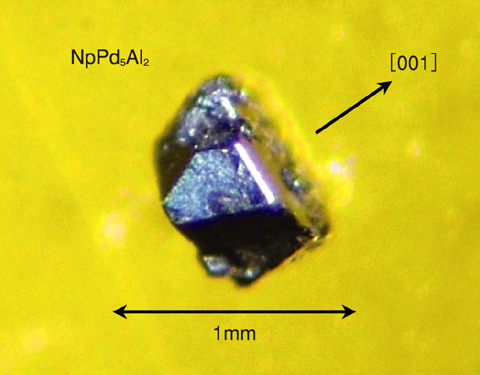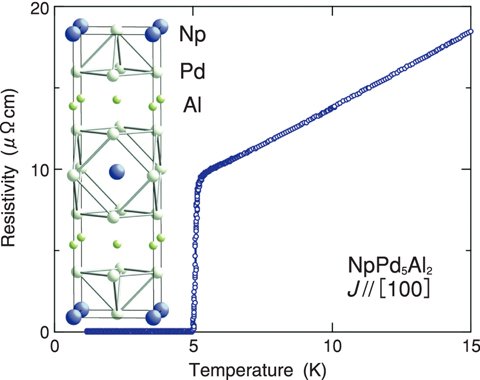
Fig.6-4 Photograph of NpPd5Al2 single crystal

Fig.6-5
Actinide elements such as uranium (U), neptunium (Np), plutonium (Pu), which are used as nuclear fuels, are very important materials in atomic energy science and technology. At the same time, these elements and their compounds have also attracted attention for their novel physical properties, because 5f electrons in actinides sometimes exhibit novel magnetic and/or superconducting behavior. While uranium compounds with less radioactivity have widely been investigated, the solid-state science of transuranium compounds including neptunium and plutonium began rather recently. The discovery of plutonium-based superconductor PuCoGa5 in 2002 has demonstrated that many new compounds as well as unknown scientific phenomena might be hidden in actinide compounds.
In 2007, we found a new neptunium-based superconductor (Fig.6-4). The occurrence of superconductivity in neptunium compounds is very surprising because they often exhibit strong magnetism, which usually destroys superconductivity. The detailed characterization of the new compound has shown that it has the composition NpPd5Al2 and crystallizes into a tetragonal crystal structure (Fig.6-5).
The discovery of NpPd5Al2 stimulated scientists in this field, leading to the discovery of several new rare-earth and actinide compounds with the same structure.
5f electrons in actinide elements change their behavior depending on the chemical or physical environment surrounding them. In particular, plutonium exhibits multiple structural phase transitions among six different crystal structures with increase in temperature from room temperature to its melting temperature. No other elements behave in such a way. The discovery of NpPd5Al2 demonstrates that discovering "new materials" by providing a new environment for actinide elements can lead to discovery of new phenomena. We hope that the present actinide material research will aid in deeper understanding of physical behavior of actinides.
This work has been performed in collaboration with Tohoku University and Osaka University.